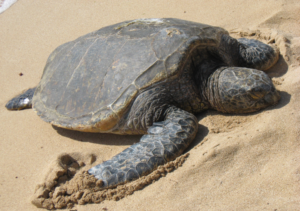Saving the Turtles in Oceania
very summer in Papua New Guinea, locals make the traditional voyage out to beaches along the coast to watch giant leatherback turtles hoist themselves out of the ocean. The mothers lay their eggs in nests along the beach and then return to the sea, not to reemerge until the following year. In recent years, however, locals have noted that fewer and fewer turtles arrive on their shores, as turtle populations around the world have declined at an alarming rate. Ange Amon, a diving instructor from Australia, works with locals to save many of the endangered turtle species, and has made significant strides toward repopulation with her newly established turtle conservancy program in Papua New Guinea. According to Amon, commercial fishing activities, ocean pollution, and locals who traditionally eat turtle eggs and meat threaten the population the most. In Malaysia, intensive egg harvesting over hundreds of years led to the sudden extinction of their leatherback turtles in the 1970s. Now, Amon and her team fight to keep the turtles from facing a similar fate in Papua New Guinea. Amon works to educate locals about how harvesting eggs and hunting for meat damages the turtle populations.

With astounding results in just the first year, the conservation program as of this month has safely re-nested more than 6000 turtle hatchlings on the protected shores of a small island named Lissenung, just off the coast of Papua New Guinea. For Amon, inspiring children to protect turtles around the island remains crucial to ensuring a steady turtle population for generations to come. According to local resource managers, the results of Amon’s conservancy project have already taken effect, with more and more healthy turtles spotted around the island every day.
